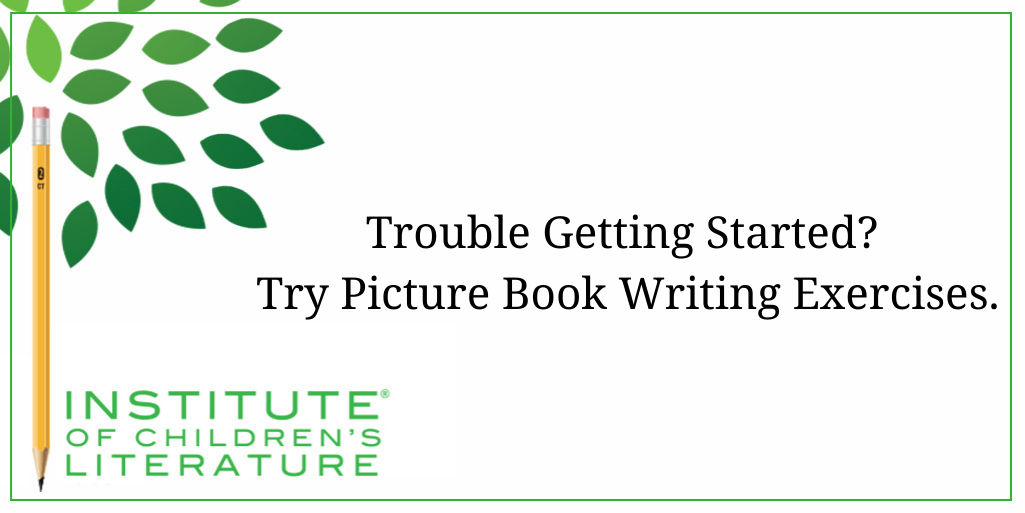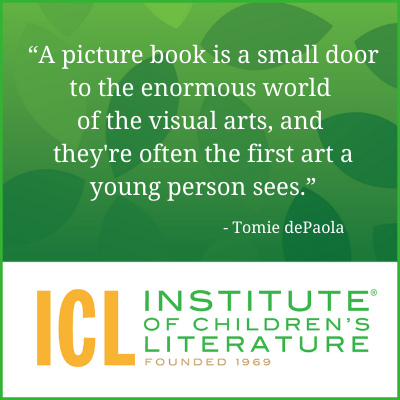
5 Ways Writers Can Prep for 2025 Goal Setting
Before we roll on to the new writing year, let’s harness our optimism for the blank slate before us and prepare for our 2025 Goal Setting just for writers.

We teach our students how to write and get published!
View our Course Catalog >
One of the most frustrating parts of writing picture books is getting started. You finally find some time to sit down and write and then you’re stumped for how to begin. Or maybe you’re taking part in some picture book challenge like the 12 x 12 challenge where you challenge yourself to write and revise twelve books in twelve months. Or NaPiBoWriWee, where you challenge yourself to write seven picture books in seven days. These manuscripts are usually under 500 words so how hard can that be? Turns out, it can be difficult.
If you’re like most writers, once your creative side gets going, you’re really going. You can feel your head buzzing with ideas. But that creative side is also given to long, sluggish naps, and revving it up can be difficult, especially if you’re going to expose it to a blank page. Blank pages are intimidating, and my creative side shies away from them. Personally, I think it’s because blank pages look like work and I’m naturally fairly lazy. Whatever the reason, for me, the best way to get going is to trick my brain into thinking we’re already on our way.

Obviously, this writing is only an exercise, but it’s one that wakes my creative side and gets it going, but it also aims it in a very specific direction and lets me practice a tiny bit of my characterization skills or my lyrical language. I often don’t need to write much before my own ideas begin trying to jump in. At that point, I abandon the exercise to work on the new story idea that came to me, begging for my attention.
This is also, by the way, a beneficial way to practice your metrical language. Many picture books are written in metered verse (meter being the regular pattern of stressed and unstressed syllables in the text) and by writing the next pages, I have to try to continue the story in that meter. It’s tricky, and when I manage to do it well, I’m improving my skills with metrical language. Again, this exercise by itself is only an exercise. I’m not suggesting we all go out and write a new ending to The Polar Express or anything of that sort, but by getting your brain into the groove of writing like a picture book author, you’re priming the pump for your own story.
Another picture book writing exercise I like for priming the pump is to look at illustration galleries (such as the one at the Society of Children’s Book Writers and Illustrators website) and begin flipping through illustrations until one speaks to me. Then I usually do one of three exercises:
In many ways, this is the same thing an illustrator does when looking at our written text; the illustrator imagines a story around the words. So, this exercise lets me imagine the words for the illustration. The key is not to simply describe the picture in words. Picture books don’t do that. Instead, imagine flipping through a picture book and finding this illustration. What kind of book would this be in? Serious? Funny? Character-driven? Lively? Or maybe it’s a concept book? What sounds might be on the page? What emotions? The illustration gives me a springboard for my own imagination, getting the engine revving.
Character studies built from illustrations can be great fun. As you look at the painting of a rather sullen salamander, you might ask yourself, why is this salamander sullen? Does he suffer from salamander sneezes and wheezes and spotty slimes? Is he broody by nature or did he have a truly awful day? Is he a friendly salamander normally, or quite a loner? Where does he live? What are his favorite things? As you begin building a world around this character, you may find a story simply pops up and you can chase it for a while, leaving the original inspiration far behind.
Sometimes illustrators take a small thing about a text and build something unexpected on top of it, something amazing. As the writer in this exercise, you can do the same. Say the illustration is of a group of anthropomorphic animals sitting on logs around a campfire in the woods. You could write something about how the friends came together at the end of the day to stare at the fire and wish they had marshmallows, or you could go beyond what you see to imagine a character peering at this unlikely group through the trees. What if the illustration is simply one part of a fantastical story of a walk in the woods? The character sees animals doing more and more unlikely things until he sees these creatures crawl off into tents for the night and the character you created also crawls in for a good night’s sleep, dreaming of what he might see in the morning.
Or maybe I jump away from what I see, and I imagine a different group of animals who’ve gone camping. Three of the animals are quick and lively, and one is a sloth. The three dash off to go fishing and hiking and forage for food. But sloth simply cannot keep up and is quickly left behind. The lively three are so noisy they chase away the fish. They run so fast they miss spotting berries. And they hike so willy-nilly they are soon completely lost until they catch the smell of berry pie. And they see the glow of a fire. And they get back to camp to find sloth ready with supper and a warm place to sit because sometimes slow is ever so much better than fast.
The more you push your imagination to go beyond what you strictly see, the more this kind of exercise can result in an idea you run with, something that ultimately shows little sign of having been inspired by the single bit of art that caught your fancy. Art has actually inspired an amazing number of picture books, and it can potentially inspire yours as well. Beginning your writing with something tangible as inspiration can help bypass that blank page terror considerably.
As a final story prompt idea, I also sometimes like to read blurbs for books on book lists or online bookstores as that will also often kick start a completely new idea. These sorts of exercises can surprise you. Just when you thought you were coming up dry or you had writer’s block, priming the pump with one of these just may unlock your own masterpiece. And it’s fun. And who doesn’t like work that’s fun?
With over 100 books in publication, Jan Fields writes both chapter books for children and mystery novels for adults. She’s also known for a variety of experiences teaching writing, from one session SCBWI events to lengthier Highlights Foundation workshops to these blog posts for the Institute of Children’s Literature. As a former ICL instructor, Jan enjoys equipping writers for success in whatever way she can.

Before we roll on to the new writing year, let’s harness our optimism for the blank slate before us and prepare for our 2025 Goal Setting just for writers.

Writers can be thin-skinned when it comes to getting feedback on their work. Let’s look at 4 ways to positively deal with constructive criticism!

Rejection is part of the territory when it comes to being a writer. Today we offer reflection for writers to help redirect your efforts after a rejection.
1000 N. West Street #1200, Wilmington, DE 19801
© 2024 Direct Learning Systems, Inc. All rights reserved.
1000 N. West Street #1200, Wilmington, DE 19801
© 2024 Direct Learning Systems, Inc. All rights reserved.
1000 N. West Street #1200, Wilmington, DE 19801
© 2024 Direct Learning Systems, Inc. All rights reserved.
1000 N. West Street #1200, Wilmington, DE 19801
© 2025 Direct Learning Systems, Inc. All rights reserved.
1000 N. West Street #1200, Wilmington, DE 19801
©2025 Direct Learning Systems, Inc. All rights reserved. Privacy Policy.
2 Comments